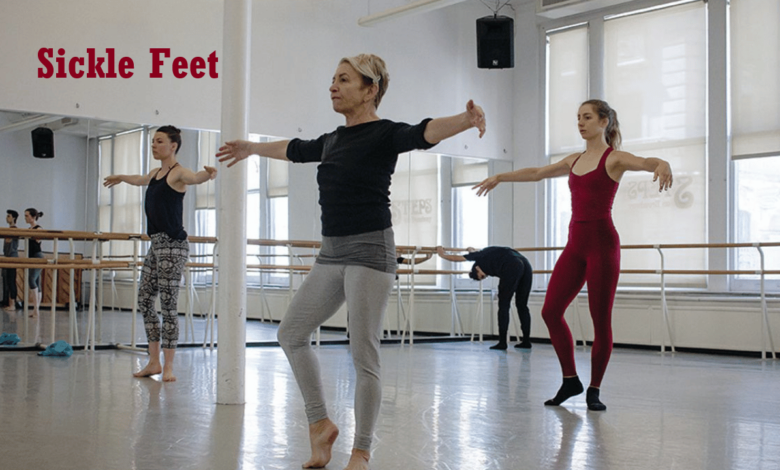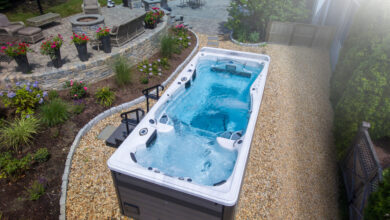Ballet Foot Health: Effective Strategies to Correct Sickle Feet

Sickle feet, a prevalent issue in ballet, affects both novice and experienced dancers. This condition, where the dancer’s foot curves inward, disrupting the line of the leg, can lead to aesthetic issues and increase the risk of injuries. This article delves into the causes, risks, corrective measures, and preventive strategies for sickle feet, offering a comprehensive understanding to help dancers maintain proper foot alignment and avoid potential injuries.
What Are Sickle Feet?
In ballet, “sickling” refers to a misalignment where the dancer’s foot curves inward rather than maintaining a straight line with the leg. This improper positioning disrupts the fluidity and aesthetic of ballet movements, creating an unappealing visual effect. For instance, imagine a ballet dancer performing a grand plié with their feet sickled inward. This not only looks aesthetically unpleasing but also puts significant strain on the foot and ankle, raising the possibility of sprains, strains, and other ailments and tendinitis.
Causes of Sickle Feet
Several factors contribute to the development of sickle feet in dancers:
- Anatomical Structure: Some dancers may have natural skeletal differences that predispose them to sickle.
- Lack of Proper Technique: Insufficient muscle strength, particularly in the ankles and lower legs, can lead to improper weight distribution and alignment.
- Tightness in Ankle Muscles: Limited flexibility can prevent proper foot positioning, resulting in sickling.
- Inadequate Training: Incorrect techniques and lack of focus on alignment during training can exacerbate the issue.
- Footwear Issues: Ill-fitting ballet shoes or improper placement of ribbons and elastics can encourage unhealthy alignment.
Risks Associated with Sickle Feet
Sickling the feet can lead to several adverse outcomes:
- Injury Proneness: Misalignment increases the likelihood of ankle sprains and strains.
- Compromised Stability: Reduced stability during movements can lead to falls or loss of balance.
- Muscle Imbalances: Uneven weight distribution can result in muscle imbalances, potentially leading to conditions like tendinitis.
- Chronic Pain: Persistent misalignment can cause chronic pain and long-term issues with the foot and ankle.
Corrective Measures for Sickle Feet
Addressing sickle feet requires a combination of strengthening exercises, flexibility workouts, alignment drills, and proper footwear. Here are some effective strategies:
- Strengthening Exercises: Focus on exercises that improve ankle stabilization and lower leg strength. Examples include calf raises, theraband exercises, and toe presses.
- Ankle Flexibility Workouts: Regular stretching and exercises to strengthen the ankle’s range of motion joint are crucial. For added flexibility, incorporate ankle circles, pointing and flexing the feet, and using a resistance band.
- Awareness & Alignment Drills: Using mirrors or video feedback to ensure proper alignment during training can help dancers correct their form. Practicing foot positions with conscious attention to alignment can reinforce adequate muscle memory.
- Proper Footwear: Ensuring that ballet shoes fit correctly and that ribbons and elastics are placed appropriately can help maintain healthy alignment. Customized orthotics may also be beneficial for some dancers.
Prevention of Sickle Feet
Preventing sickle feet involves proactive measures to build strength, enhance proprioception, and ensure proper training. Here are some key strategies:
- Proprioception Training: Developing awareness of how the body and feet are positioned can prevent misalignment. Dancers can practice proprioception exercises, such as closing their eyes while pointing and flexing their feet, to improve their awareness of foot positioning.
- Endurance Building: Enhancing core stability and leg strength to maintain correct posture, even when tired, is essential. Incorporate exercises that build endurance, such as planks, leg lifts, and core stability routines.
- Professional Guidance: Working with experienced dance instructors or physical therapists who specialize in dance-related injuries can provide personalized guidance and early intervention. They can help identify issues early and recommend appropriate exercises and techniques to correct sickling).
Additional Tips for Dancers
- Warm-Up Properly: Always start with a proper warm-up to prepare the muscles and joints for the demands of dancing. Focus on dynamic stretches and gentle movements that increase blood flow to the lower body.
- Cross-Training: Engage in cross-training activities that complement ballet, such as Pilates or yoga, to improve overall strength, flexibility, and body awareness.
- Listen to Your Body: Pay attention to any signs of pain or discomfort. Early intervention can stop little problems from growing into serious injuries.
- Consistent Practice: Regularly practice proper foot alignment and positioning to reinforce good habits. Consistent practice helps develop muscle memory and reduces the likelihood of sickling.
Conclusion
Sickle feet, a common challenge in ballet, can be effectively addressed and prevented with proper understanding, training, and preventive measures. By focusing on strengthening exercises, improving flexibility, enhancing proprioception, and seeking professional guidance, dancers can maintain proper foot alignment, enhance their performance, and reduce the risk of injuries. Taking proactive steps to prevent and correct sickling will help dancers achieve the graceful and fluid movements that are the hallmark of ballet.
FAQs About Sickle Feet in Ballet
What are sickle feet in ballet?
Sickle feet refer to a joint misalignment in ballet where the dancer’s foot curves inward, disrupting the straight line from the leg through the foot. This misalignment can affect the aesthetics of a dancer’s movements and increase the risk of injury.
What causes sickle feet?
Sickle feet can be caused by several factors, including:
Anatomical structure or natural skeletal differences
Lack of proper technique and muscle strength
Tightness in ankle muscles
Inadequate training and incorrect alignment
Ill-fitting ballet shoes or improper placement of ribbons and elastic.
What risks are associated with sickle feet?
Risks associated with sickle feet include:
Increased likelihood of ankle sprains and strains
Reduced stability and balance during movements
Muscle imbalances leading to conditions like tendinitis
Potential for chronic pain and long-term issues with the foot and ankle.
How can sickle feet be corrected?
To correct sickle feet, dancers can:
Engage in strengthening exercises for ankle stabilization and lower leg strength.
Perform ankle flexibility workouts to improve range of motion.
Use mirrors or video feedback to practice proper alignment.
Ensure appropriate fitting of ballet shoes and correct placement of ribbons and elastics.
How can a dancer improve proprioception to avoid sickle feet?
Dancers can improve proprioception through specific exercises that enhance their awareness of foot positioning. Practicing with closed eyes to feel the alignment and using feedback from mirrors or videos can help develop this skill.
You May Also Read: Chelsea Acton Famous Parenting: The Renowned Voice in Modern Parenting




